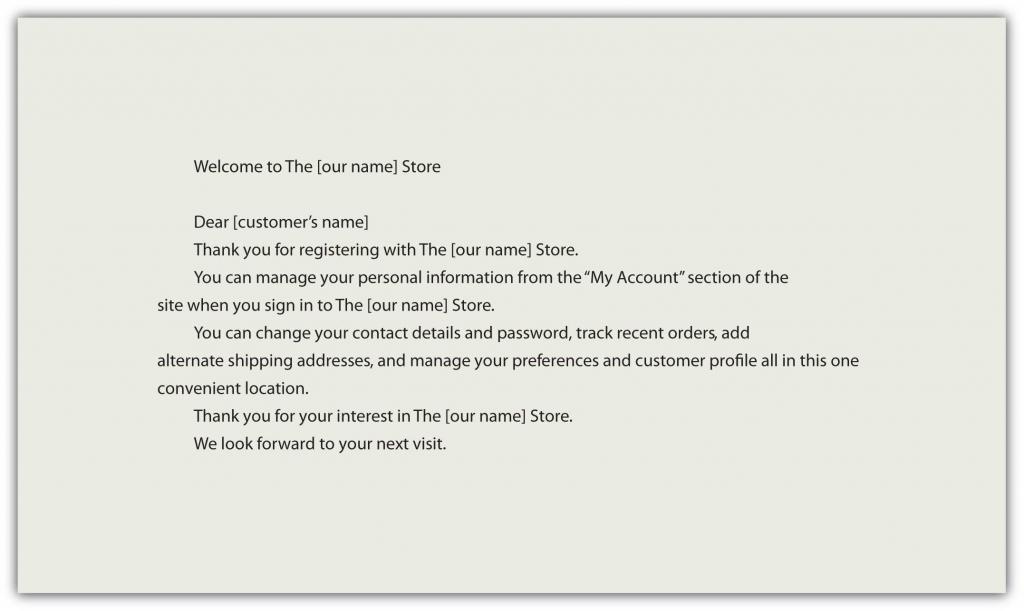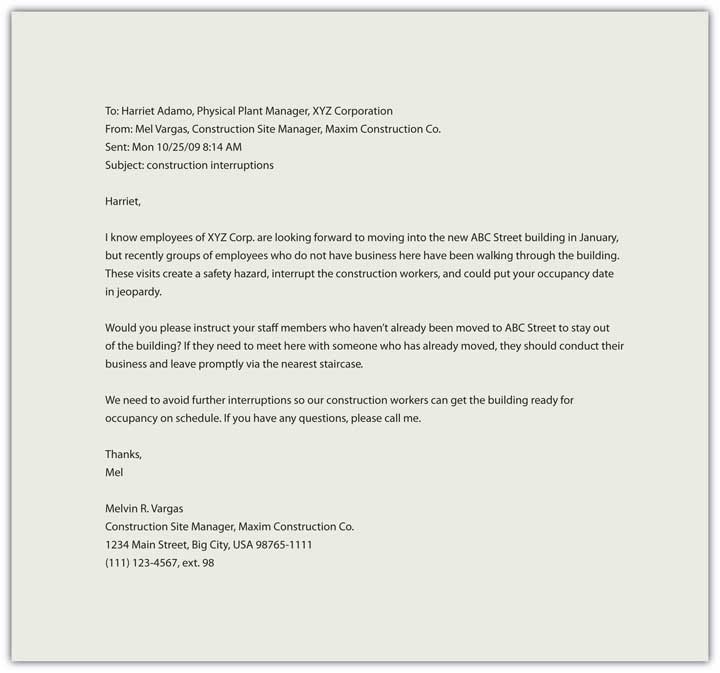Appendix 3: Tips for Effective Business Texting and Emails
Tips for Effective Business Texting
- If you are unsure if texting is appropriate, inquire in an email or phone call and use the method of contact provided or preferred.
- Know your recipient; “? % dsct” may be an understandable way to ask a close associate what the proper discount is to offer a certain customer, but if you are writing a text to your boss, it might be wiser to write, “what % discount does Murray get on $1K order?”
- Let others set the tone. If you are unsure of the level of professionalism adapt according to the tone they set.
- Anticipate unintentional misinterpretation. Texting often uses symbols and codes to represent thoughts, ideas, and emotions. Given the complexity of communication, and the useful but limited tool of texting, be aware of its limitation and prevent misinterpretation with brief messages.
- Contacting someone too frequently can border on harassment. Texting is a tool. Use it when appropriate but don’t abuse it.
- Unplug yourself once in awhile. Do you feel constantly connected? Do you feel lost or “out of it” if you don’t have your cell phone and cannot connect to people, even for fifteen minutes? Sometimes being unavailable for a time can be healthy—everything in moderation, including texting.
- Don’t text and drive. Research shows that the likelihood of an accident increases dramatically if the driver is texting behind the wheel (Houston Chronicle, 2009). Being in an accident while conducting company business would reflect poorly on your judgment as well as on your employer.
Tips for Effective Business Emails
- Proper salutations should demonstrate respect and avoid mix-ups in case a message is accidentally sent to the wrong recipient. For example, use a salutation like “Dear Ms. X” (external) or “Hi Barry” (internal).
- Subject lines should be clear, brief, and specific. This helps the recipient understand the essence of the message. For example, “Proposal attached” or “Your question of 10/25.”
- Close with a signature. Identify yourself by creating a signature block that automatically contains your name and business contact information.
- Avoid using all caps. Capital letters are used on the Internet to communicate emphatic emotion or yelling and are considered rude.
- Avoid abbreviations. An email is not a text message, and the audience may not find your wit cause to ROTFLOL (roll on the floor laughing out loud).
- Make proper use of acronyms. You may understand that COO stands for Chief Operating Officer but that can mean many things to different people.
- Be brief. Omit unnecessary words.
- Use a good format. Include line breaks between sentences or divide your message into brief paragraphs for ease of reading. A good email should get to the point and conclude in three small paragraphs or less.
- Reread, revise, and review. Catch and correct spelling and grammar mistakes before you press “send.” It will take more time and effort to undo the problems caused by a hasty, poorly written e-mail than to get it right the first time.
- Know the difference between CC and BCC. CC stands for Carbon Copy; it will send an original copy of the email to all parties addressed and CC’d. You use this when you want someone to know that the conversation has occurred without them needing to add input. BCC stands for Blind Carbon Copy and this will send a copy of the email to both the TO and the BCC without the original person seeing who else is BCC’d onto the email. This could be used for when you are working with a group and need to send an email to a member and your professor or boss without the group member knowing, you would BCC your professor or boss. This is simply so your professor or boss can be aware of the conversation occurring with you and the group member without the group member knowing your professor or boss is aware of the conversation as well. This can be used when communicating with a customer directly while informing your superior without the customer being aware.
- E-mail ahead of time if you are going to attach large files (audio and visual files are often quite large) to prevent exceeding the recipient’s mailbox limit or triggering the spam filter.
- Test links. If you include a link, test it to make sure it is complete.
- Give feedback or follow up. If you don’t get a response in twenty-four hours, e-mail or call. Spam filters may have intercepted your message, so your recipient may never have received it.
- Reply promptly. Watch out for an emotional response—never reply in anger—but make a habit of replying to all e-mails within twenty-four hours, even if only to say that you will provide the requested information in forty-eight or seventy-two hours.
- Use “Reply All” sparingly. Do not send your reply to everyone who received the initial e-mail unless your message absolutely needs to be read by the entire group.



